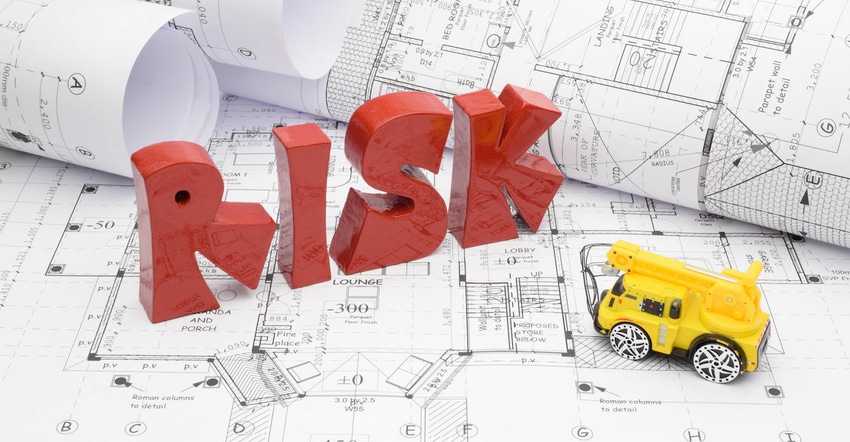5 Strategies to Minimize Construction Risk
Contractors and subcontractors know that risk comes with the territory, but there are simple steps that can minimize your exposure.

Andrew Mendelson, chief risk management officer for Berkley Construction Professional, knows construction projects are inherently risky. Mendelson, a licensed architect with more than 36 years of experience, said design and construction are unpredictable by nature.
“Projects continue to evolve in complexity with increasing owner expectations for energy performance and other sustainable goals,” he said during a recent AIA webinar titled “5 Risk Avoidance Strategies for Contractors.”
Standards have elevated for resilient design, due to severe weather caused by climate change, adding further complexities to construction projects, Mendelson added.
That, along with demands for accelerated project schedules, often accompanies “insufficient” project budgets, he said.
Mendelson also said additional risk issues have emerged since the COVID-19 pandemic began.
Decreased access to construction sites, increased hygienic protocols, reduced labor capacity and ongoing supply chain issues have all factored to increase risk associated with construction.
Those issues contributed to construction cost inflation, which has strained already tight budgets, Mendelson said.
Finally, designers and contractors are part of a construction project owner’s risk management team by default, Mendelson said, because they help the owner achieve a satisfactory result while minimizing risk.
Here are five strategies Mendelson said contractors should include in their company’s risk management plan.
1. Stay on top of product trends
Especially in commercial construction, Mendelson said contractors should stay up to date on trends and how the industry is evolving.
He said product options are always expanding, all with different recommendations and processes for installation, and added that improper installations can be both costly and yield failing results.
Mendelson pointed to advancements in air filtration systems, due to the pandemic, as an example of systems now required in many new commercial structures.
He also said it’s important not to overrepresent your qualifications to a project owner, so it’s important to stay aware of processes involved with new products.
2. Understand the AIA Contract
AIA’s General Conditions of the Contract for Construction is an industry standard contract document used widely, even on projects where there aren’t AIA owner/architect agreements, according to Mendelson.
“It sets forth responsibilities for the means, methods and procedures of construction,” he said.
The standard contract also includes language about expectations for site safety and warranties and guarantees for the work, which is an industry standard Mendelson said contractors accept.
“As a contractor you have absolute duties for performance in fulfilling scheduling results,” he said, adding that understanding the contract you signed is a crucial element of avoiding unnecessary risk.
3. Work with familiar firms
Mendelson said a project’s odds of success are enhanced if it includes design professionals and subcontractors who are well known to each other and have an established, successful track record.
“You want to be working with people you’ve had prior experience with,” he said. “If you’re offered an opportunity and maybe you’re not comfortable with some of those factors, it’s OK to make a no-go decision when the project, client or other team members are not the right fit.”
4. Manage subcontractors relationships actively
Subcontractors should live by the same rules as general contractors in terms of quality standards and client service, according to Mendelson.
Subcontractors and general contractors should also be on the same page when it comes to a contract’s flow-down provisions, which assign responsibilities for specific tasks such as cleanups and coordination with other trades.
Mendelson said contractors should avoid limiting subcontractor liabilities unless they have similar contractual protections.
5. Establish and encourage quality standards
“Do it nice or do it twice” are words to live by on construction sites, Mendelson said. He emphasized that the simple principle of doing things right, and encouraging others to carefully follow plans and specs, so that tasks don’t have to be done again is crucial.
“The contract documents prepared by the design professionals are not going to show where every nail goes, where every bolt goes,” he said. “There’s going to be a need for (the contractor) to interpret those (plans).”
Mendelson advised fostering an environment where meeting the owner’s expectations is a shared priority, so that goals among teams remain aligned.
“You want your entire team to know that quality is top priority even if it means accepting certain financial compromises in the short term,” he said.
About the Author(s)
You May Also Like




